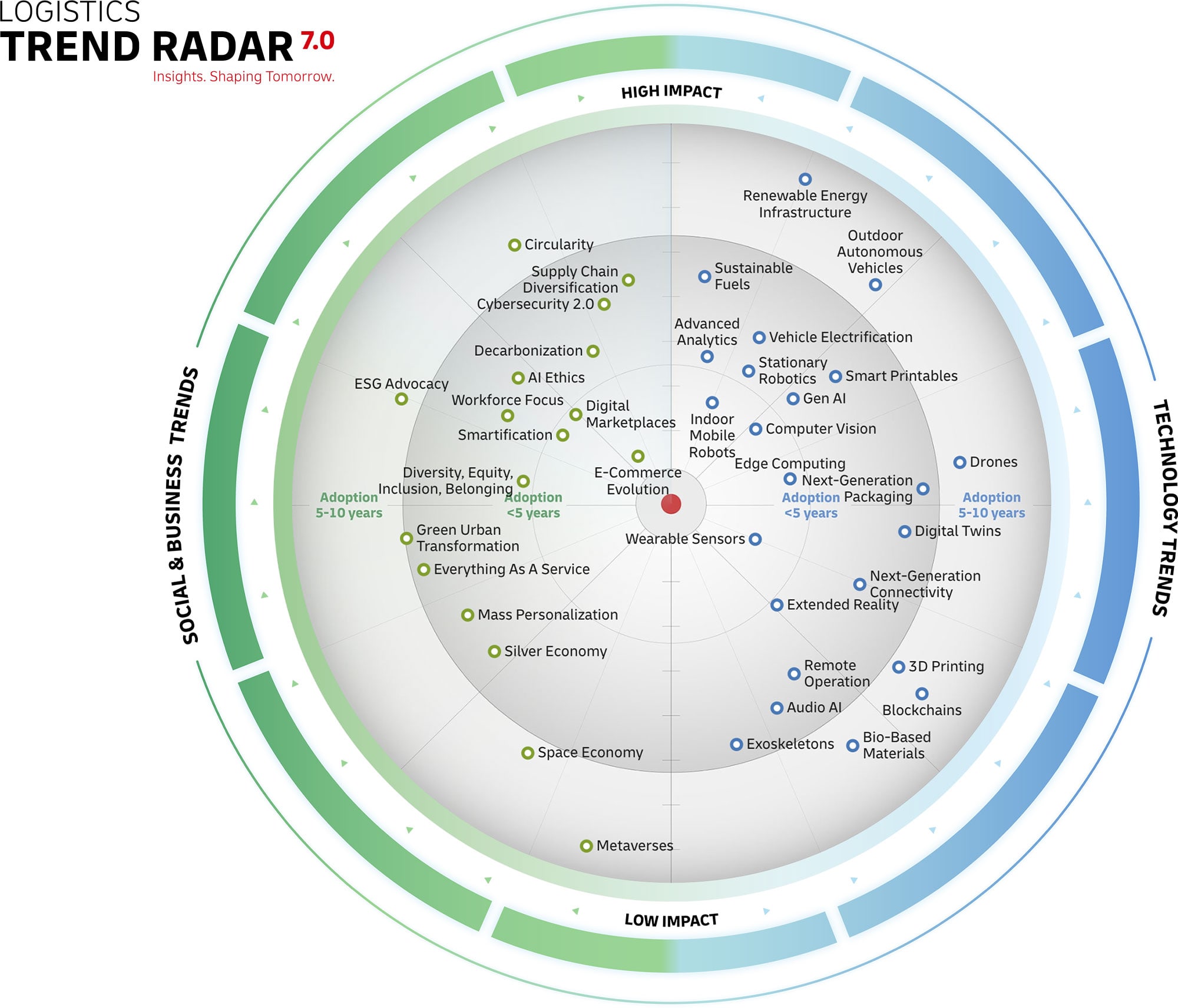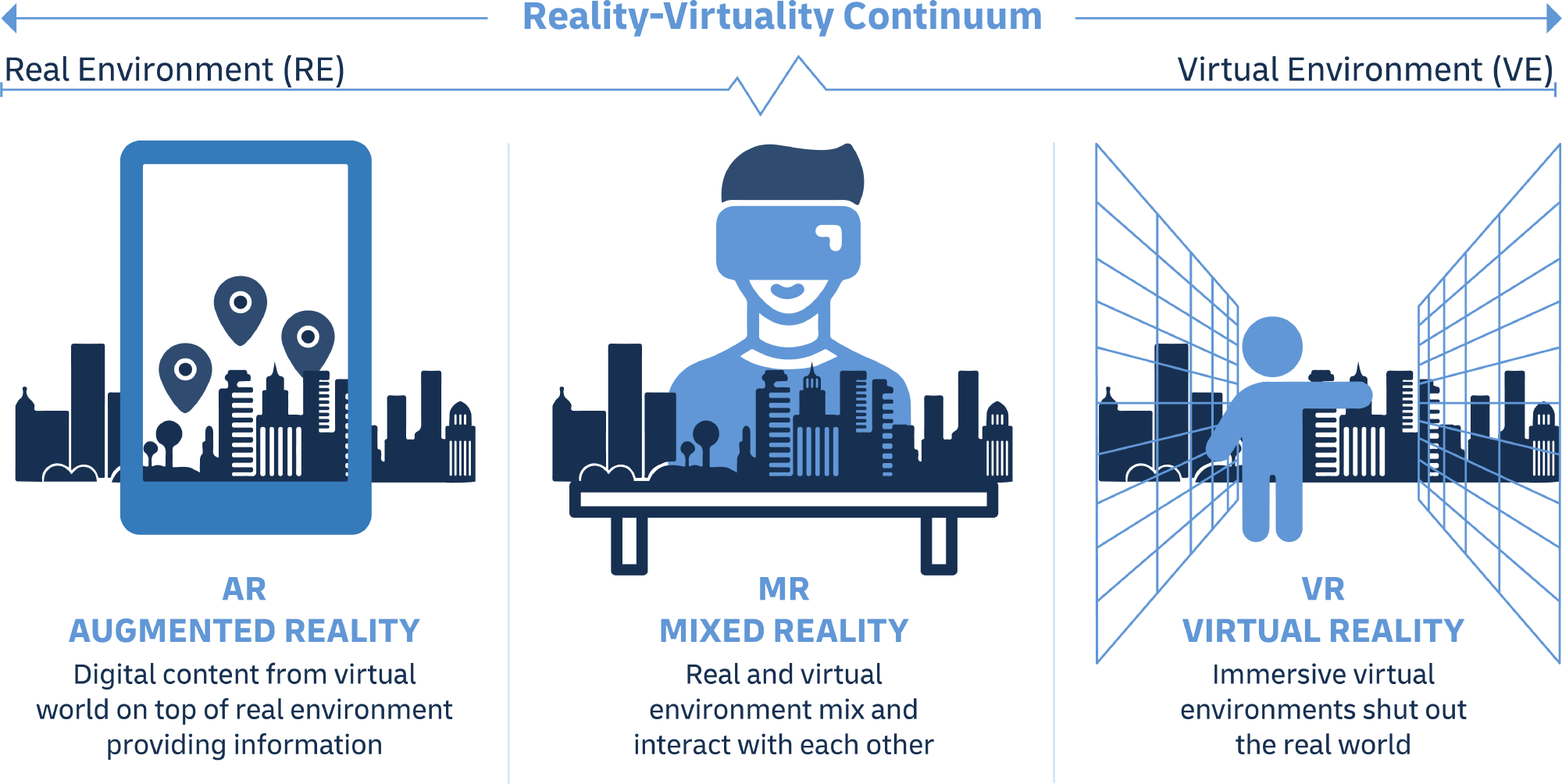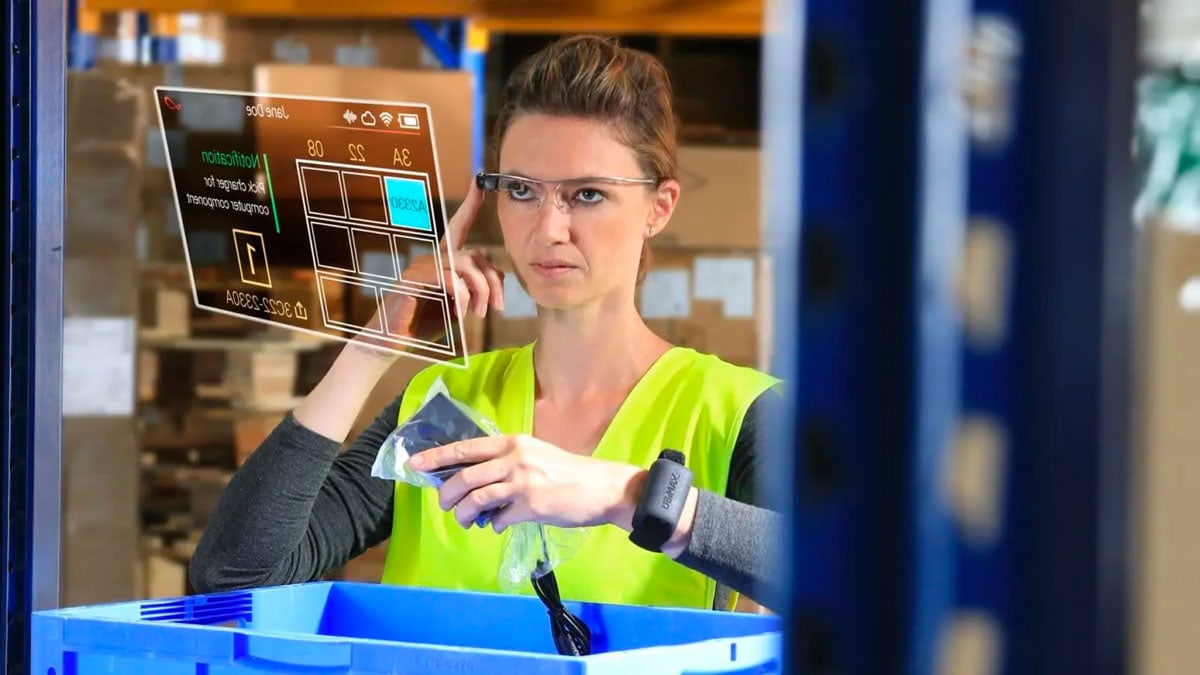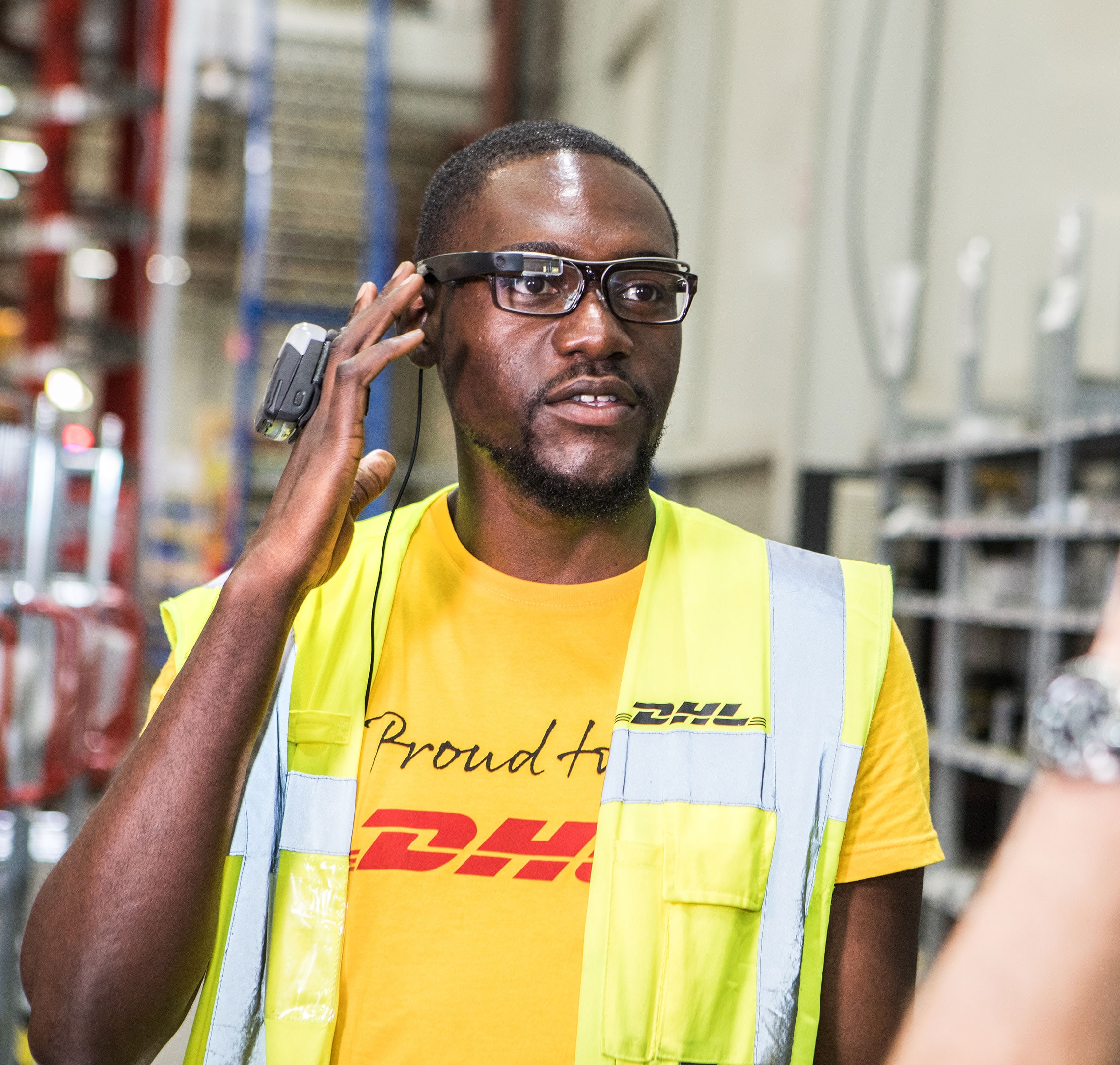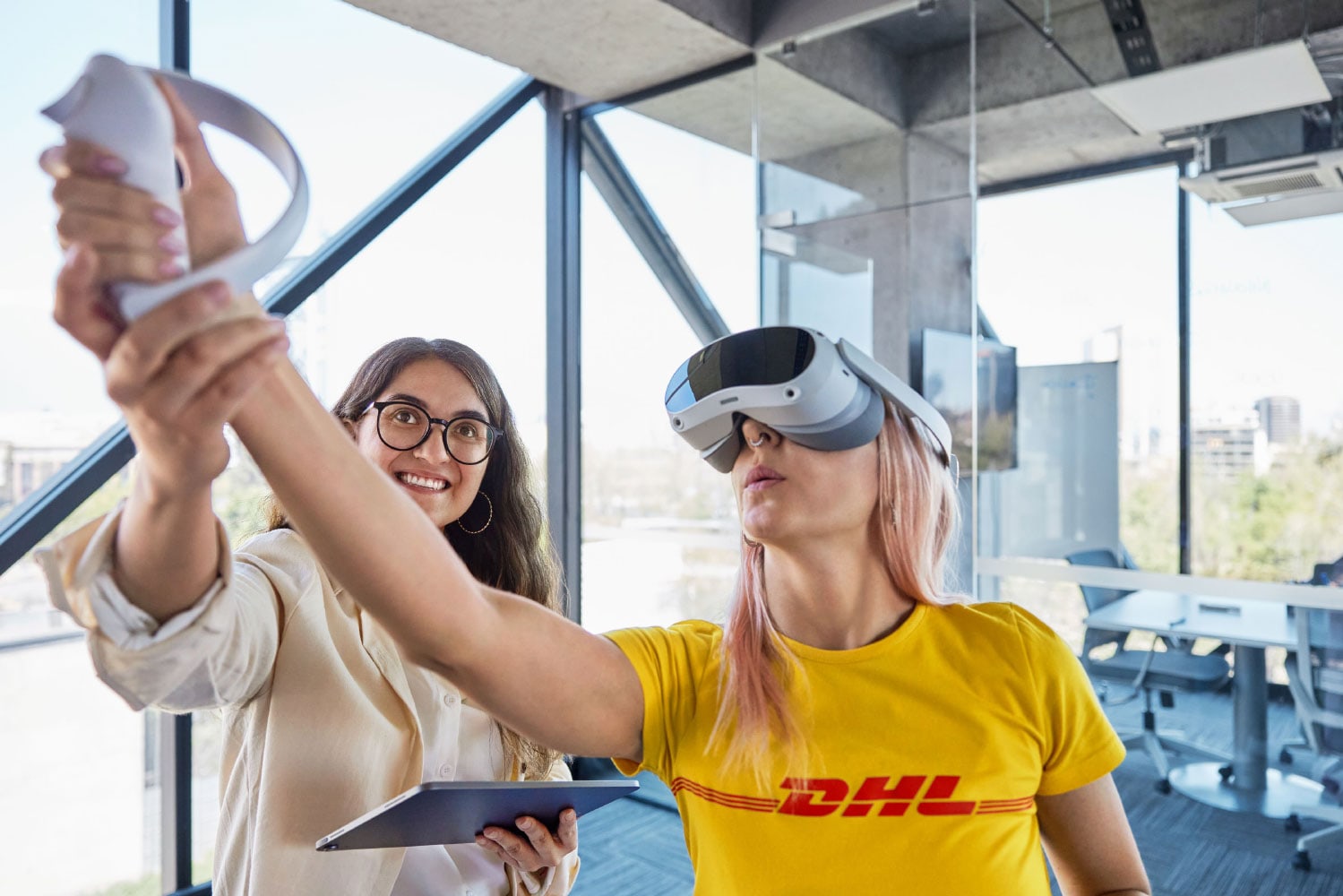The trend of Extended Reality, otherwise known as XR, encompasses the different experiential technology genres of augmented reality (AR), virtual reality (VR), and mixed reality (MR). AR enriches the physical world with purely visual digital screens or overlays in the right place at the right time; VR is a fully immersive digital experience requiring special headsets; and MR is at the intersection of both, infusing interactive virtual content within the physical world.
As the most basic form of extended reality (XR), AR has been around for over a decade allowing two-dimensional information to be displayed on top of real-world images. While mass market popularity of AR reached its peak in 2016 with the launch of interactive smartphone and tablet apps like Pokémon GO, it first appeared in enterprise applications as early as 2013 with the launch of Google Glass. DHL was an early adopter of the technology using wearable smart glasses for workflow guidance and seamless, hands-free remote support, completing first pilot projects in 2014.
With the development of VR, a fully immersive virtual experience could be achieved through headsets. The gaming market was an early adopter but, over time, many enterprises, including those in logistics, recognized the potential of 360° virtual content for training, especially for scenarios which are difficult or maybe even dangerous to replicate in reality.
Following this, the most groundbreaking XR developments in recent years have included MR. One example is the Microsoft HoloLens, a holographic device for business use. Another example, launched in early 2024, is the Apple Vision Pro, which introduced the term ‘spatial computing.’ With these devices, users experience a unified perceptual reality in which virtual three-dimensional (3D) content is spatially aligned with the real world. This creates a combined reality in which users can naturally interact with both virtual and real objects or content.
While these capabilities open up new possibilities to achieve truly interactive training content and simulations that allow for enhanced remote collaboration, further use cases where MR can offer real differentiation have yet to be implemented. In time, these capabilities will achieve much more than just enhancing the user experience.
Unit sales of XR headsets dropped significantly in 2022 and 2023, following a massive increase during the pandemic. More recently, announcements about new devices have helped renew the hype, especially the 2024 launch of the Apple Vision Pro, and analysts predict unit sales in 2024 will bounce back by more than 40% over 2023. It remains to be seen whether mainstream adoption will follow.
In logistics , some XR use cases are now well-established, mature solutions; for example, workflow guidance during the warehouse picking process. However, available XR technology has not yet been used to full potential.
While the wider application of XR within logistics will not revolutionize how businesses are run, it will most likely deliver many benefits. It will enhance the employee experience, increase safety, improve the effectiveness of training and onboarding, boost productivity by reducing error rates, and enable information sharing with employees wherever and whenever needed.



